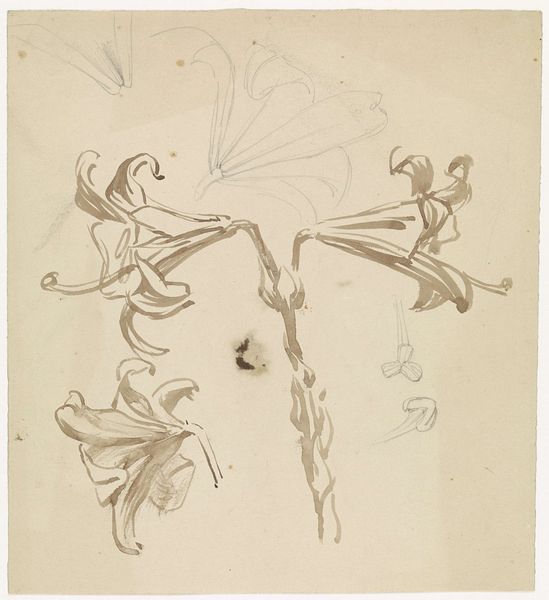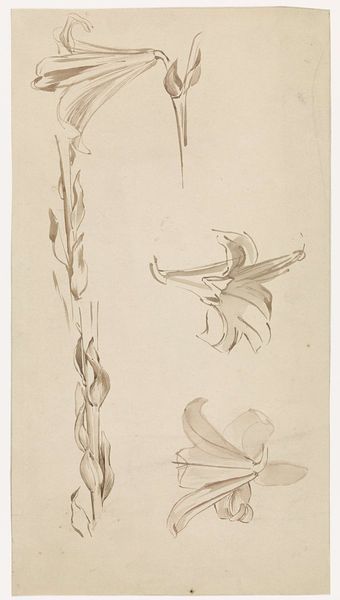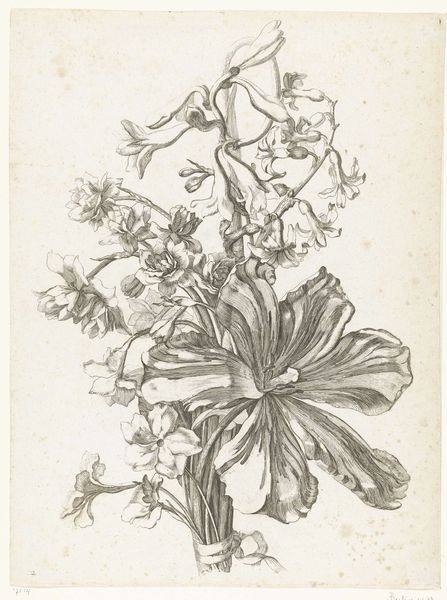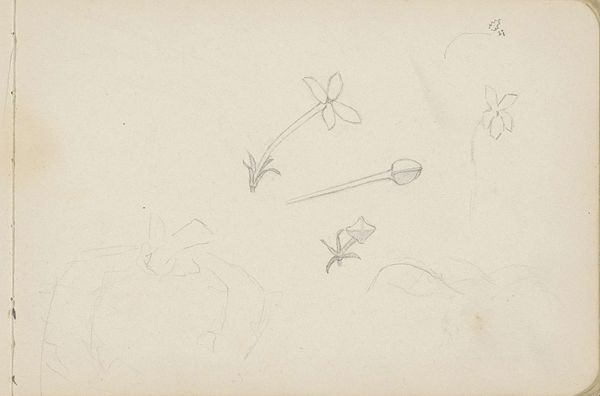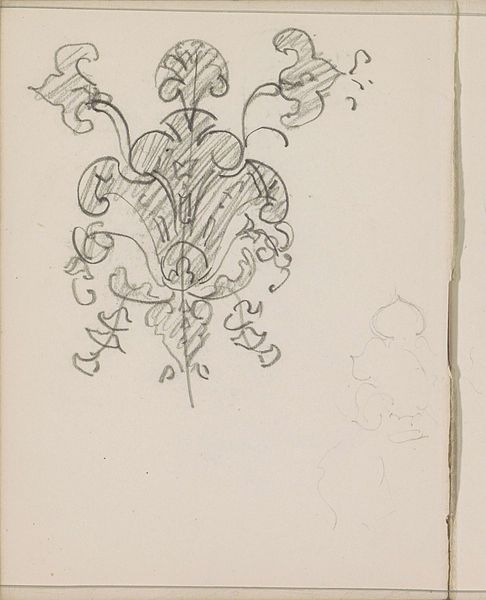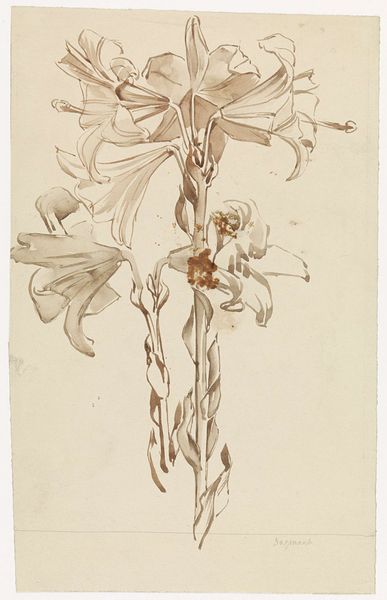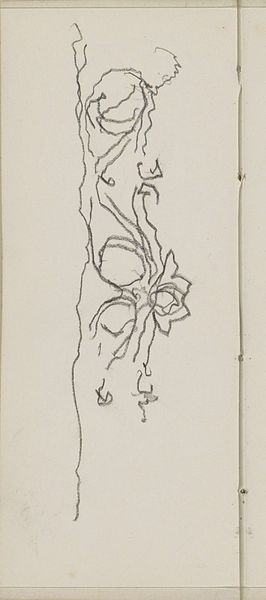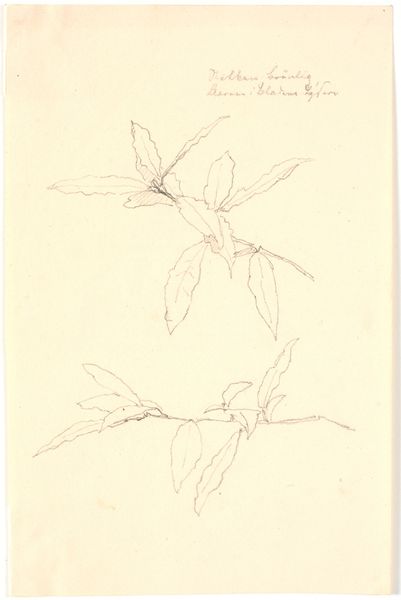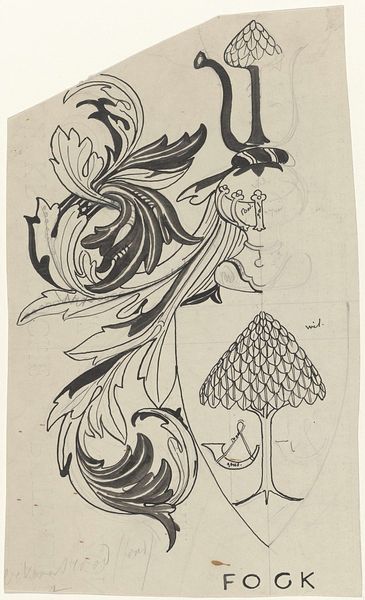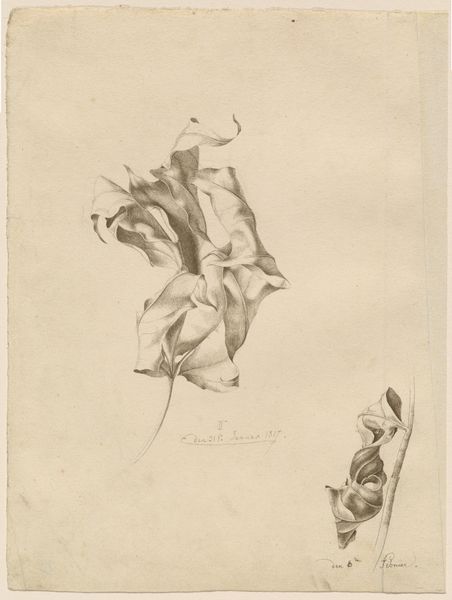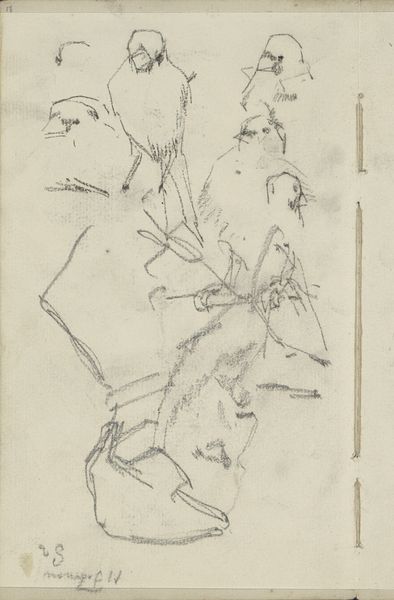
drawing, paper, ink
#
drawing
#
pen sketch
#
pencil sketch
#
paper
#
form
#
ink
#
line
#
sketchbook drawing
#
pencil work
#
academic-art
#
realism
Dimensions: height 370 mm, width 183 mm
Copyright: Rijks Museum: Open Domain
Curator: This drawing of lilies immediately gives me a feeling of serene observation. The soft lines seem to caress the forms. What do you see? Editor: The flowers are quite delicately rendered, a quality reminiscent of botanical illustrations used in scientific classifications of the time. The 'Studieblad met lelies'--Study Sheet with Lilies--was created by Antoon Derkinderen sometime between 1869 and 1925. It uses pen and ink to carefully explore the titular lilies. Curator: 'Study Sheet' is a great description, as the composition doesn’t aim for artifice but instead a deep, committed seeing. Look how each bloom faces a different direction, each revealing another aspect. The realism is strong. Editor: Right, though the work defies strict categorization as realism, because of when it was produced and the academic elements it shares with Symbolism, we have to also think of its place within discourses about visibility and access for differently-abled artists, since Derkinderen experienced profound hearing loss during adulthood. Curator: Oh, interesting. Perhaps these lilies were his way to listen… or perhaps an effort to freeze a moment. Like trying to capture the ephemeral quality of beauty as hearing faded, or memory. Editor: And speaking of beauty, lilies historically held complex symbolic meanings related to death, rebirth, and purity—ideals accessible only to a select few. They were frequently connected to representations of femininity, which also could mean being exclusive of diverse gendered experiences. Curator: That reminds me, the lines here are really confident, though I would imagine Derkinderen might reject readings that cast this work as metaphor. Do you think? Editor: Certainly. It also prompts thoughts on the artist’s role during social upheavals of the late 19th century—his art may represent retreat from the realities, or contemplation. Curator: Right, he doesn’t seem intent on addressing specific inequities of industrializing Europe. He seems far more intent on the dance of line, shadow and bloom. A very quiet kind of rebellion, perhaps? Editor: In that sense, and with his emphasis on personal study, he allows us a glimpse into ways an artist can connect with the self during those years of turbulence. Curator: It gives me so much to reflect on how the most intensely personal experience might, somehow, find echoes in much broader shared human experiences. Editor: Yes, and perhaps the silence the drawing evokes makes that easier to feel and consider more expansively.
Comments
No comments
Be the first to comment and join the conversation on the ultimate creative platform.
